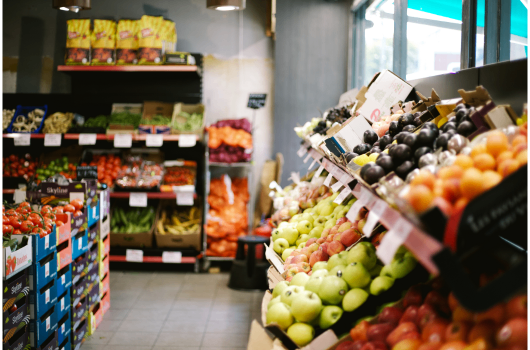Producer prices fell in December, foreshadowing further food price cuts
Economic commentary by Jakub Seidler, Chief Economist of the CBA

Producer prices continued to fall in December, similarly to the previous month. Industrial producer prices declined by 0.5% m-o-m, above market expectations, and agricultural producer prices continued to fall, although they usually rise in December, while prices in the construction sector rose slightly but did not deviate from the normal trend. Services prices, although flat, usually fall in December. In general, however, today's figures confirm the continuing disinflationary and, in some categories, deflationary trend and foreshadow a further decline in food prices for final consumers (Graph 1 and Graph 2 for the year-to-date). Thus, January inflation could end up surprising on account of the downward trend in food prices.
Industrial producer prices fell by 0.5% mom in December, while the analysts' consensus expected a 0.2% decline. Annual growth then accelerated slightly from 0.8% yoy to 1.4% (expectations +1.7% yoy, Chart 1). However, most of the price developments in December were driven by coke and petroleum product prices, so these were behind both the month-on-month decline, due to the low comparative base, and the year-on-year rise in industrial producer prices. Food producer prices fell month-on-month for the 10th month in a row and are now down 4.1% yoy on an annualised basis. This is positive news on the grounds that these prices also largely predict the evolution of food prices in the consumer basket, foreshadowing a further decline in food prices, which occurred in December not only on a month-on-month basis but also already on an annualised basis (Chart 3).
Agricultural producer prices continued to fall in December, although the decline was smaller than in November. However, the 1.2% decrease in prices was beyond normal seasonality, as prices usually rise in December (Graph 4). This development was mainly driven by crop prices. The year-on-year decline in agricultural producer prices thus intensified in December, reaching -23% for crop prices and -13% for livestock prices (Chart 5). For the whole of 2023, agricultural producer prices fell by 6%, but rose by almost 32% in 2022 (Chart 2).
Prices for construction work rose marginally month-on-month (0.1%), in line with normal developments, while prices are only preliminary.
Prices for business services were flat, but normally fall in December. Out-of-season developments were particularly evident in advertising and employment services.
Overall, December's figures confirm a continued disinflationary and, in some components, deflationary trend in the business prices category, which is positive news for the course of inflation this year, although, as with consumer inflation, the January figures will also be important. The deflationary trend in farm and food producer prices then suggests a further decline in food prices, which already began to a greater extent in December. Thus, January inflation could end up surprising because of the downward trend in food prices, but the central bank will still be rather cautious at its February meeting and will cut rates only cosmetically, while a more significant decline could come at the end of March, when the January inflation figures will already be known.
Industrial producer prices fell by 0.5% mom in December, while the analysts' consensus expected a 0.2% decline. Annual growth then accelerated slightly from 0.8% yoy to 1.4% (expectations +1.7% yoy, Chart 1). However, most of the price developments in December were driven by coke and petroleum product prices, so these were behind both the month-on-month decline, due to the low comparative base, and the year-on-year rise in industrial producer prices. Food producer prices fell month-on-month for the 10th month in a row and are now down 4.1% yoy on an annualised basis. This is positive news on the grounds that these prices also largely predict the evolution of food prices in the consumer basket, foreshadowing a further decline in food prices, which occurred in December not only on a month-on-month basis but also already on an annualised basis (Chart 3).
Agricultural producer prices continued to fall in December, although the decline was smaller than in November. However, the 1.2% decrease in prices was beyond normal seasonality, as prices usually rise in December (Graph 4). This development was mainly driven by crop prices. The year-on-year decline in agricultural producer prices thus intensified in December, reaching -23% for crop prices and -13% for livestock prices (Chart 5). For the whole of 2023, agricultural producer prices fell by 6%, but rose by almost 32% in 2022 (Chart 2).
Prices for construction work rose marginally month-on-month (0.1%), in line with normal developments, while prices are only preliminary.
Prices for business services were flat, but normally fall in December. Out-of-season developments were particularly evident in advertising and employment services.
Overall, December's figures confirm a continued disinflationary and, in some components, deflationary trend in the business prices category, which is positive news for the course of inflation this year, although, as with consumer inflation, the January figures will also be important. The deflationary trend in farm and food producer prices then suggests a further decline in food prices, which already began to a greater extent in December. Thus, January inflation could end up surprising because of the downward trend in food prices, but the central bank will still be rather cautious at its February meeting and will cut rates only cosmetically, while a more significant decline could come at the end of March, when the January inflation figures will already be known.
Disclaimer: Text translated automatically, excuse any imperfections.